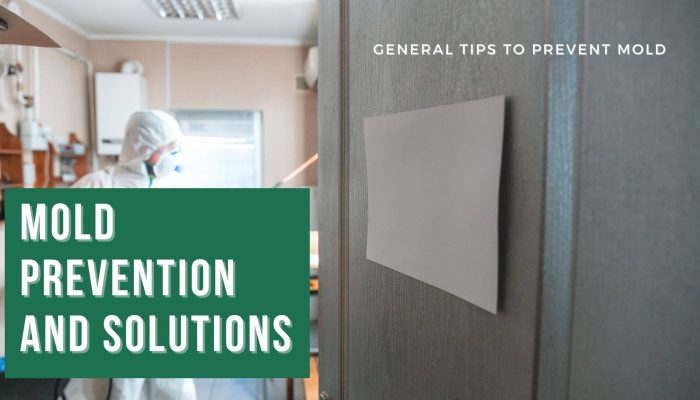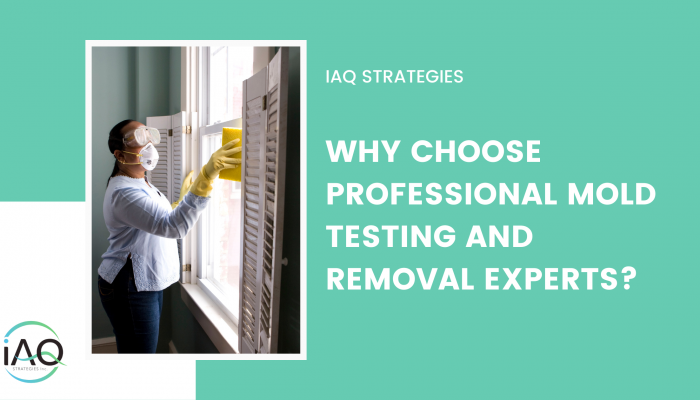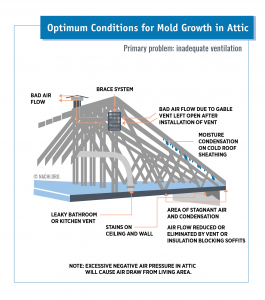The rainy season brings high atmospheric humidity and seasonal issues such as the build-up of moisture from water flowing in undesirable places. These factors can unfortunately lead to mold growth throughout a home. When mold is found in homes, it must never be left unaddressed as it presents a structural risk to the building and leaves unpleasant wall stains. Most importantly, mold infestation can be detrimental to your health, by causing breathing issues, severe allergies and infections.
Mold can grow anywhere, be it on your floors, carpet, furniture, or even in places you cannot see such as areas inside walls around leaking pipes, the backside of drywall, and above ceiling tiles. Mold spores can spread across the home easily, therefore making the problem difficult and expensive to fix.
The most effective strategy for preventing a serious mold problem in the home is moisture control. In this article, we at IAQ Strategies list general tips to help prevent mold growth.
How To Prevent Mold:
1. Fresh Air
Keeping the windows open will help to increase the ventilation throughout the house, and is an ideal way to lower indoor carbon dioxide levels. High levels of carbon dioxide can cause decreasing oxygen levels in your body, thereby interfering with the flow of oxygen to your brain.
When a house has been closed up for several months during the winter, carbon dioxide can build up, especially in rooms where you spend the most time. Fresh air will help to dry out damp, musty areas and reduce stuffiness and odor. Open up the windows for 10-15 minutes every day to provide some natural ventilation.
2. Dry Out Damp or Wet Areas Immediately
Mold grows in moisture, so be sure to dry any wet areas immediately. Wet areas can include seepage into the basement after a heavy rainfall, accumulation from a leaky pipe, or even a spill on your rug. All must be dried within 24 to 48 hours.
Major events such as a flood require immediate attention. Water-damaged carpets, furniture, bedding and more must be dried or removed completely.
Regular occurrences need daily attention as well; make sure to dry the walls and floors after taking a shower, and do not leave wet items lying on the floor. Make sure to never leave wet clothes in the washing machine as mold can spread quickly in the washing cavity. Hang clothes to dry, preferably outside or somewhere in the house with good ventilation.
3. Proper Ventilation
Ensure that all rooms in the house are properly ventilated. This includes the kitchen, bathroom and laundry room, as daily domestic activities encourage moisture and therefore mold growth. Use dehumidifiers and AC units, however, make sure they do not produce moisture themselves by keeping a check on them regularly and cleaning them as directed.
4. Balance Humidity Levels
As mold thrives in humid environments, keep the humidity levels in the house low. In spaces that are prone to excessive moisture, such as the bathroom, kitchen, or laundry room, leave the vent fans on for a while after use. Another option is to use plug in dehumidifiers or install a home humidification system.
5. Repair or Clean Roof Gutters
A leaking roof or full gutters is often a reason for mold growth in a home. Keep the roof gutters cleaned and inspected for damage on a regular basis. Repair them when needed, and pay close attention to water stains after storms that may indicate a leak.
6. Use Green Cleaning Products
Cleaning products with an overwhelming odor are a source of volatile organic compounds (VOCs) in your home. This is particularly true of artificial pine and lemon products. When using these cleaners to get rid of mold and other pollutants, it is simply trading one contaminant for another. To help avoid mold build-up it is best to use non-toxic, water-based, and non-aerosol cleaners.
If you have or suspect a mold problem in your home, it is imperative to call for professional mold inspection and removal services. Mold prevention professionals will take the necessary steps to help avoid or stop mold growth immediately.
IAQ Strategies is a leading mold removal company in Montreal that provides immediate mold inspection services. If you have found mold in your home, get in touch with the IAQ team today so we can bring your home back to a clean, safe and healthy space for you and your family.





